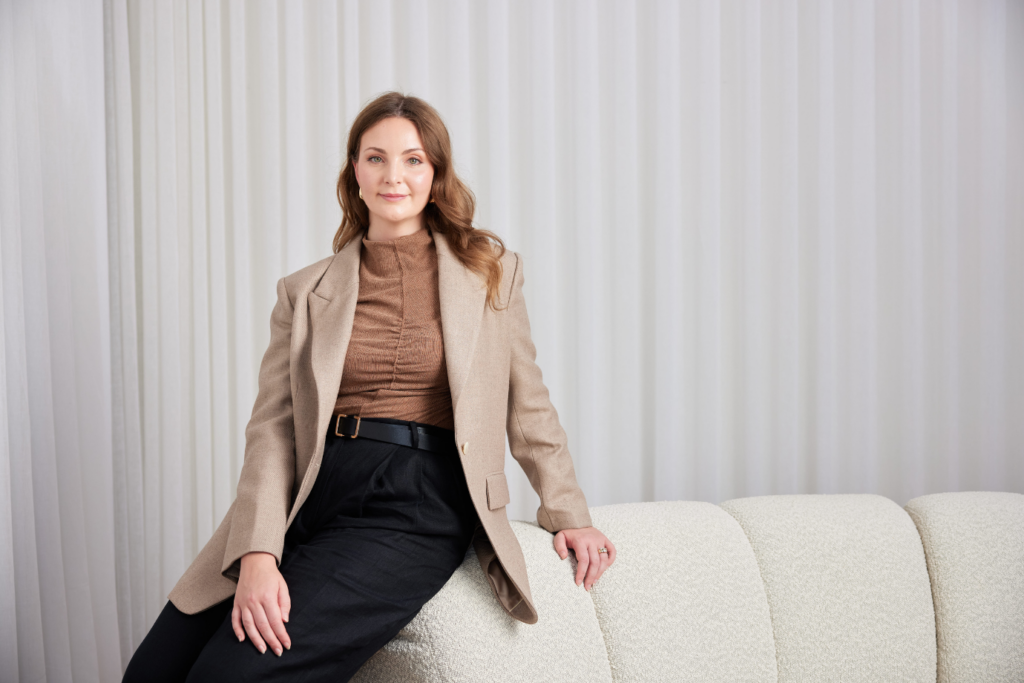11:58am: Glancing at my phone, I muttered under my breath, “Pick up the pace, come on.” The traffic light was still red. Cars zipped by as I weighed my options: Do I jaywalk? No, it’s too busy…and that looks like a police car two cars back. Tick-tick-tick—the light changed, the green figure flickering to life. I hurried across.
12:03pm: Not far now. My foot slid inside my shoe with each hurried step—the awkward dance of balance and urgency. I grumbled that familiar groan: if only I could run in heels.
12:07 PM: Seven minutes late but I’ve arrived.
If you’re not early, you’re late. It’s one of those formative teachings that shaped my entire life. But in this current life—founder, CEO, daughter, wife, friend, person trying to walk 10,000 steps a day, make home-cooked meals, care for aging family members, and somehow find time to walk the dog—being early doesn’t always happen.
Life doesn’t bend to the rhythm of the startup world.
Stepping into the room, I felt the air buzz with the familiar energy of a startup event. I scanned the long table at the centre of the room—there were more people than I had anticipated—and then I began that all-too-familiar count: one, two, maybe three women.
Then it hit me: there was no seat for me.
I wasn’t upset, not really. It wasn’t personal. After all, I was the one who arrived late. I quietly found a spot near the back, slid into my chair, and decided I’d wait until the round of introductions was over before pushing my way in with an extra seat.
No big deal… So why couldn’t I shake this feeling—that acquainted, heavy weight of “here we are again”?
It wasn’t just about the lunch. This was a vignette of the world we navigate daily.
A world where the unwritten rule supports those who put their oxygen mask on first—but how do you do that when you’re the oxygen tank for a whole community?
The reality of venture funding is not just a set of unfortunate statistics—it’s a systematic suppression of innovation.
In 2024, a mere four per cent of startup capital in Australia went to all-female teams. Four percent. Consider that. Ninety-six per cent of funding is channelled to male-led ventures, with the occasional mixed-gender team. It’s a glaring, uncomfortable truth. It’s a missed opportunity that weakens our collective potential for growth and progress.
Theories abound on why women founders are sidelined; some say women don’t pitch as boldly; others claim it’s investor bias—yes, male and female investors alike tend to back men. There’s even the argument that women founders, especially those balancing caregiving roles, can’t adopt the same “all-in” mentality that investors so adore.
But here’s the hard truth: women aren’t losing out because they’re less qualified, less driven, or somehow missing that elusive founder spark. They’re being edged out because the system simply wasn’t built for us.
I’ve had more than one person tell me I should write about increasing female founders, as if all it takes is a checklist of “solutions”.
They want the usual: promote flexibility, encourage mentorship, introduce family-friendly policies. As if a few token nods to “family-friendly” policies could offset decades of ingrained exclusion. Flexibility means nothing if women are kept at the fringes, endlessly “catching up” to meetings that start without them, conversations that happen behind closed doors, and networks that feel less like opportunity and more like exclusion.
What the system truly needs is a structural overhaul. We don’t lack the ideas or the drive. We’re shouldering responsibilities beyond the workplace. We’re more than founders; we’re community pillars, caregivers, leaders of households, the ones weaving family and business together in ways that the startup ecosystem barely acknowledges, let alone supports. The modern startup narrative—the one that insists on a 24/7 hustle—was never made for us.
It’s time for this ecosystem to reckon with that fact and build something radically different. We don’t need the patronising “more mentorship” platitudes. We need investors who see potential without the need for women to contort themselves into a mould that they were never meant to fit. We need funding that reaches those who may not always be in the room but are, without question, building the future.
And what does radically different look like? It isn’t necessarily groundbreaking, but these initiatives would bring meaningful change to the space:
- Scholarships that provide women with professional workspaces—programs like the AWSN x Stone & Chalk Scholarship have already proven successful.
- Funding where the playing field is even—allowing women to realise their ambitions without competing against predominantly male-led startups. The Fearless Innovator Grant, a South Australian initiative, is an example of this approach.
- Initiatives that support women in building essential management skills and developing growth strategies on a 1:1 basis, at times that align with their schedules—such as the South Australian Women in Business Foundations program.
This isn’t just about giving women a seat at the table. It’s about building a new table.
The system wasn’t built for us, but if we reshape it, maybe—just maybe—it will start working for everyone.


